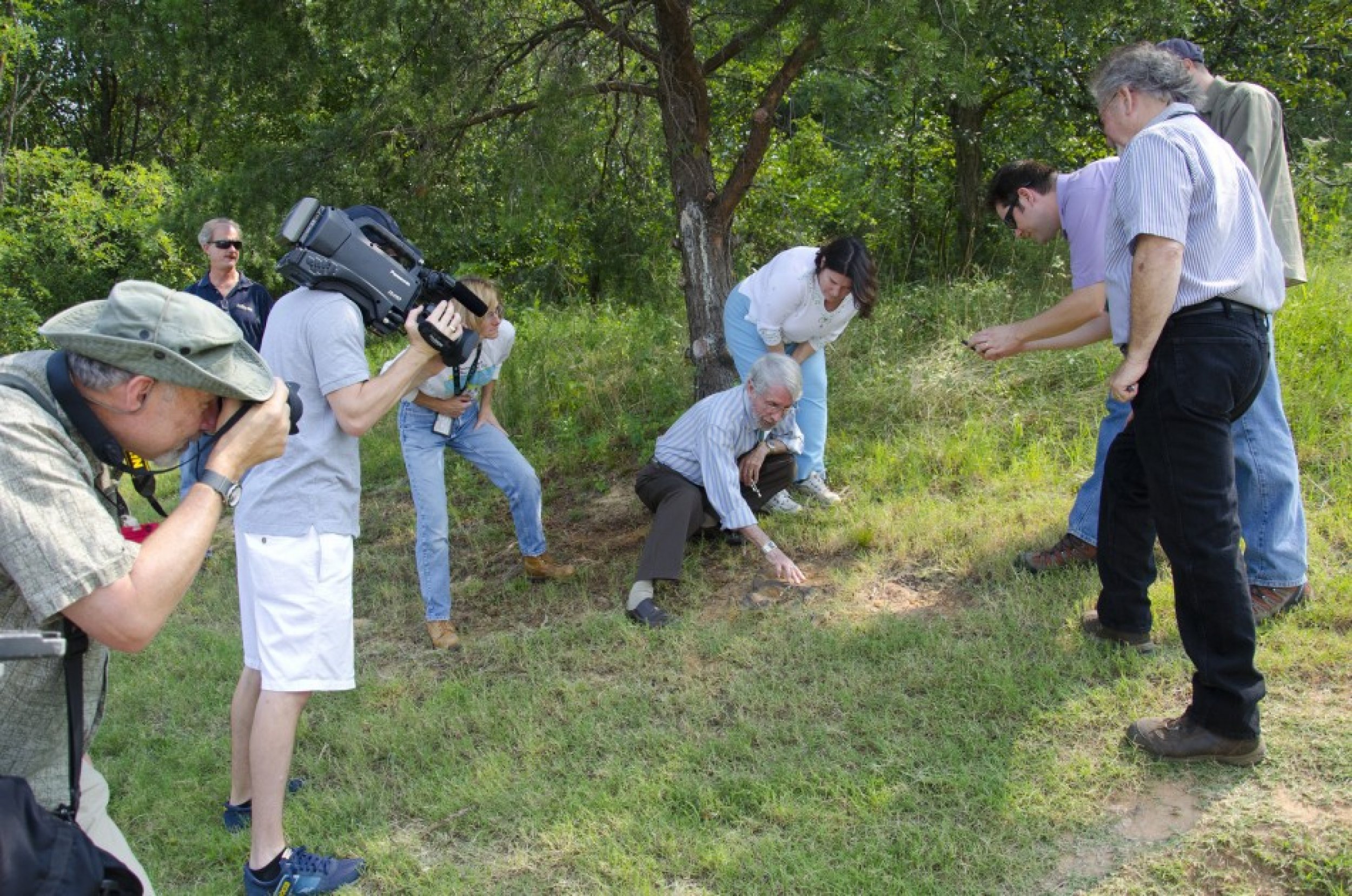Millions Of Years Old Dinosaur Footprint Found At NASA's Goddard Campus In Greenbelt [PHOTOS & VIDEO]
About 112 million years ago, a plant-eating dinosaur, known as nodosaur, roamed what is now NASA's Goddard Space Flight Center in Greenbelt, leaving a huge footprint in the Cretaceous mud that came to notice only this summer.
On Friday, Aug. 17, dinosaur tracker Ray Stanford shared the location of the footprint, which the dinosaur made with its back left foot, with Goddard's facility management. The footprint, sticking out of the grass, was similar to that of an elephant and was nearly 14 inches wide.
Although NASA officials accepted the discovery as an authentic dinosaur footprint for the time being, they said that they'd be calling in experts to confirm the find and search the area for other evidence, the Washington Post reported.
"This was a large, armored dinosaur," Stanford said. "Think of it as a four-footed tank. It was quite heavy, there's a quite a ridge or push-up here. ... Subsequently the sand was bound together by iron-oxide or hematite, so it gave us a nice preservation, almost like concrete."
Stanford said that nodosaurs were like "four-footed tanks." They grew thick, spiky armor knobbed with big "nodes." They used to browse vegetation and crouched down low to protect themselves from toothy attacks.
Stanford has had a number of papers published, which include the discovery of a new species of nodosaur from a fossilized hatchling that was found near the University of Maryland in College Park. The nodosaur that made the huge footprint at Goddard probably belonged to the early Cretaceous period and could be 15 to 20 feet long.
The Cretaceous Period ran between 145.5 and 65.5 million years ago, and was the last period of the Mesozoic Era, according to NASA.
Stanford also identified and presented several smaller footprints - three-toed, flesh-eating therapods - to Goddard officials from the same site.
"Space scientists may walk along here, and they're walking exactly where this big, bungling heavy armored dinosaur walked, maybe 110 to 112-million years ago," Stanford said.
Have a look at the photos and the video below:






© Copyright IBTimes 2025. All rights reserved.






















